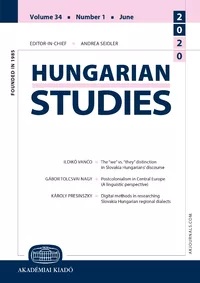Patterns of guild migration in the early modern period: Lessons from a comparative study of young artisans' migration and university peregrination
Patterns of guild migration in the early modern period: Lessons from a comparative study of young artisans' migration and university peregrination
Author(s): Katalin Mária KincsesSubject(s): Cultural history, History of Education, Migration Studies
Published by: Akadémiai Kiadó
Keywords: guilds; peregrination; migration; young artisans; mobility
Summary/Abstract: Guild migration in Hungary in the 16th to 18th centuries can be best captured by exploring the migration of young artisans. Peregrination and the migration of young artisans were a process of learning and making contacts in a foreign environment over several years. We will be looking at the life, tasks, objectives and, not least, knowledge acquisition and career strategy of one age group, young men roughly between the ages of 16–20, who in the early modern period were the main depositories of local economic and political power in Europe, including the territories of the former Kingdom of Hungary – especially in the towns – and who were entering local economic and political power after half a decade or so of studying. This highly mobile way of acquiring knowledge abroad through university and guild migration provided an experience of leaving the familiar home base. What these young men had in common was that their learning process took place in a foreign territory, far away from their home, in the unfamiliar environment of another country, using a different language. In the case of both groups of learners, the existence of a network of family ties, which can be traversed in several directions, proved to be a key organising factor. This link between the – mainly German-speaking – urban and rural citizens in Western Europe and the Hungarian (and Transylvanian) citizens in the early modern period was always evident in the guild organisation, both economically and culturally.
- Issue Year: 37/2023
- Issue No: Spec.Issue
- Page Range: 72-89
- Page Count: 18
- Language: English

